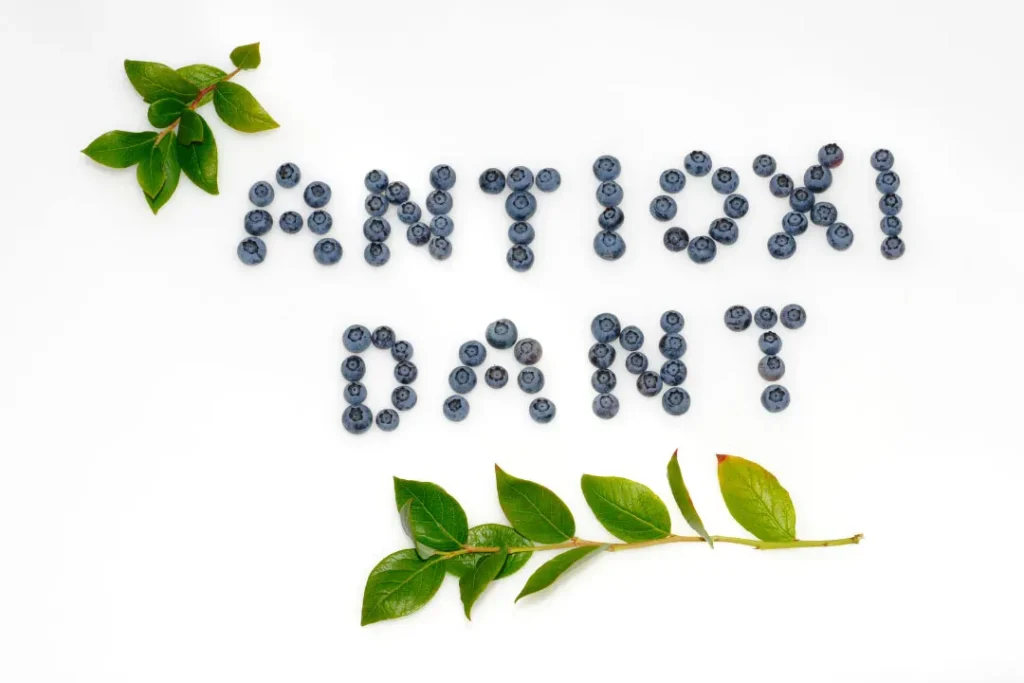The perennial herbaceous plant known as bulbous buttercup (Ranunculus bulbosus) is a member of the Ranunculaceae family. The bulbous buttercup is an indigenous plant of Africa, Asia, and Europe. It has also become established in North America due to its potential health benefits.
The potential of bulbous buttercup as a dietary supplement has attracted more attention recently. This piece seeks to provide a thorough examination of bulbous buttercup’s properties, health advantages, recommended dose, negative effects, probable drug interactions, and responsible usage.
You May Also Like:
Sunmed CBD vs. Partnered Process CBD: Finding the Best CBD for Sleep
Flaxseed Oil: Benefits, Dosage, Side Effects, Drug Interactions, and Other Important Information
Bulbous Buttercup: Benefits, Dosage, Side Effects, Drug Interactions, and Other Important Information is an original (NootropicsPlanet) article.
Nature of Bulbous Buttercup
The bulbous buttercup is a perennial plant with a bulb-like root that may reach a height of 30 cm. The leaves are strongly lobed, alternating, and taste distinctively caustic. Additionally, the plant produces these beautiful yellow blooms in the spring or summer. Bulbous buttercups have a rich and varied phytochemistry that includes a number of bioactive substances. Alkaloids, flavonoids, saponins, tannins, and glycosides are the primary chemical elements. The alkaloid ranunculin is regarded as the most important of them, being principally in charge of the plant’s numerous pharmacological actions.
Health Benefits of Bulbous Buttercup
Some noteworthy health advantages of bulbous buttercup include:
- Anti-inflammatory properties: Bulbous buttercup’s anti-inflammatory effect has been linked to the presence of flavonoids and saponins. Reactive oxygen species and the release of pro-inflammatory cytokines, both of which fuel inflammation, have been found to be suppressed by these substances.
- Analgesic effects: It has been discovered that the poisonous molecule protoanemonin, which is hydrolyzed from the alkaloid ranunculin, has analgesic properties. The use of bulbous buttercup extracts has been shown in studies to reduce pain in animal models.
- Antimicrobial activity: Bulbous buttercup has been used for treating a variety of infections in the past, and current research supports this usage. Staphylococcus aureus, Escherichia coli, and Candida albicans are just a few of the bacterial and fungal strains that the plant’s extracts have shown to be effective against.
- Antioxidant qualities: Bulbous buttercup has been shown to possess antioxidant qualities due to the presence of flavonoids. These substances can scavenge free radicals, protecting cells and tissues from oxidative damage.

Chemistry of Bulbous Buttercup
Bulbous buttercup contains a range of alkaloids, flavonoids, saponins, tannins, and glycosides among other bioactive substances. The different physiological effects and possible health advantages of the plant are a result of these phytochemicals.
The main ingredient in these compounds is an alkaloid known as ranunculin. This substance is changed into the poison protoanemonin by enzymatic hydrolysis in the tissues of the plant or by digestion in the human body. Despite being harmful, this substance is linked to the medicinal properties of the plant. Flavonoids function by removing free radicals from the body and preventing inflammatory pathways. On the flip side, saponins and tannins are linked by anti-bacterial and anti-inflammatory properties.
Physiological Mechanisms of Action of Bulbous Buttercup
Bulbous buttercup contains bioactive substances that interact with the body’s many physiological systems to provide a range of health benefits.
- Anti-inflammatory Activity: Bulbous buttercups include flavonoids and saponins that may prevent the body from producing cytokines, which are chemicals that cause inflammation. They also prevent the NF-kB pathway, a crucial participant in the inflammatory process, from being activated. They may aid in reducing inflammation and its effects by doing this.
- Analgesic Activity: Ranunculin, a component of bulbous buttercup protoanemonin, inhibits the feeling of pain by acting on the central nervous system. It is thought to function by preventing the nerve fibers’ ability to transmit pain impulses.
- Antimicrobial Activity: Bulbous buttercup saponins and other bioactive substances may inhibit the development and spread of a variety of bacterial and fungi species. They cause microbial cell membrane integrity to be compromised, which results in cell lysis and death.
- Antioxidant Activity: Bulbous buttercup flavonoids have strong antioxidant activity. This supports cellular health and function and may shield against numerous oxidative stress-related illnesses, including cancer and heart disease.

Optimal Dosage of Bulbous Buttercup
The best amount of bulbous buttercup to take as a dietary supplement depends on many variables, including age, weight, and general health. However, it is important to use this plant with care when taking it as a supplement since some of its ingredients are hazardous.
Although there are no precise recommendations for the best dosage of bulbous buttercup, it is advised to begin with modest dosages and progressively increase the quantity while being monitored by a healthcare provider. Bulbous buttercup extracts may be used topically as creams, ointments, or poultices, which is usually seen to be safer than taking them by mouth.
Side Effects of Bulbous Buttercup
Bulbous buttercup may provide health advantages, but if ingested in excess, it might have negative consequences. Ranunculin is a source of the poisonous substance protoanemonin, which may irritate mucous membranes and the skin. It may cause symptoms including nausea, vomiting, diarrhea, and stomach discomfort when consumed. In severe situations, convulsions, paralysis, or even death may occur.
Additionally, bulbous buttercup may cause allergic responses, especially in those who are already known to be sensitive to plants of the Ranunculaceae family. Mild skin rashes to severe anaphylactic responses are all possible symptoms.

Potential Substance Interactions with Bulbous Buttercup
The possible interactions of bulbous buttercup with other drugs are not well understood scientifically. However, since it contains bioactive substances, it could affect how certain drugs work.
Due to its inherent anti-inflammatory and analgesic characteristics, bouncing buttercup may improve the effectiveness of anti-inflammatory and analgesic drugs. Therefore, it is important to use care while using bulbous buttercup as these drugs prevent unwanted side effects.
Additionally, the antibacterial properties of bulbous buttercup may work either synergistically or antagonistically to counteract the effects of antibiotics. Therefore, before consuming bulbous buttercup, anyone taking antibiotics should speak with a healthcare professional.
Responsible Use of Bulbous Buttercup
Bulbous buttercup should only ever be used as a dietary supplement responsibly and under the guidance of a medical professional. Due to this plant’s potential for toxicity, it is essential to follow the advised dose and keep an eye out for any negative side effects. To assure their quality and safety, it is also advised to buy bulbous buttercup supplements from reliable vendors.
Additionally, unless specifically directed by a healthcare practitioner, people with pre-existing medical diseases, children, pregnant or nursing women, and bulbous buttercups should avoid taking it.

Bulbous Buttercup:
Conclusion
A type of perennial herbaceous plant known as the bulbous buttercup (Ranunculus bulbosus) exemplifies the intricate beauty and adaptability of plant life in various ecosystems. With its bright yellow flowers and unique growth habits, not only does this buttercup species add vibrancy to fields, but it also has a rich and varied phytochemistry. This bulbous buttercup shows qualities in inhibiting the growth of fungi and bacteria along with some antioxidant and anti-inflammatory properties.
Buttercup is said to have good analgesic and antimicrobial activities. The best dosage for bulbous buttercup to be used as a supplement depends heavily on the condition of the user. However, it is essential to approach the bulbous buttercup with a nuanced understanding, because it also has ranunculin which is poisonous and may irritate the mucous membranes of the skin. Hence, it is pivotal to source this plant from a trustworthy source and seek a doctor’s advice before implementing it into your wellness routine.
References:
- Therapeutic Potential of Ranunculus Species (Ranunculaceae): A Literature Review on Traditional Medicinal Herbs. Retrieved from: https://www.ncbi.nlm.nih.gov/pmc/articles/PMC9227133/
- Counter-Irritant and Other Medicinal Uses of Plants in Ranunculaceae by Native Peoples in British Columbia and Neighbouring Areas. Retrieved from: https://pubmed.ncbi.nlm.nih.gov/6387285/
- Chemical and Biological Evaluation of Ranunculus Muricatus. Retrieved from: https://pubmed.ncbi.nlm.nih.gov/27087095/
Important Note: The information contained in this article is for general informational purposes only, and should not be construed as health or medical advice, nor is it intended to diagnose, prevent, treat, or cure any disease or health condition. Before embarking on any diet, fitness regimen, or program of nutritional supplementation, it is advisable to consult your healthcare professional in order to determine its safety and probable efficacy in terms of your individual state of health.
Regarding Nutritional Supplements Or Other Non-Prescription Health Products: If any nutritional supplements or other non-prescription health products are mentioned in the foregoing article, any claims or statements made about them have not been evaluated by the U.S. Food and Drug Administration, and such nutritional supplements or other health products are not intended to diagnose, treat, cure, or prevent any disease.


